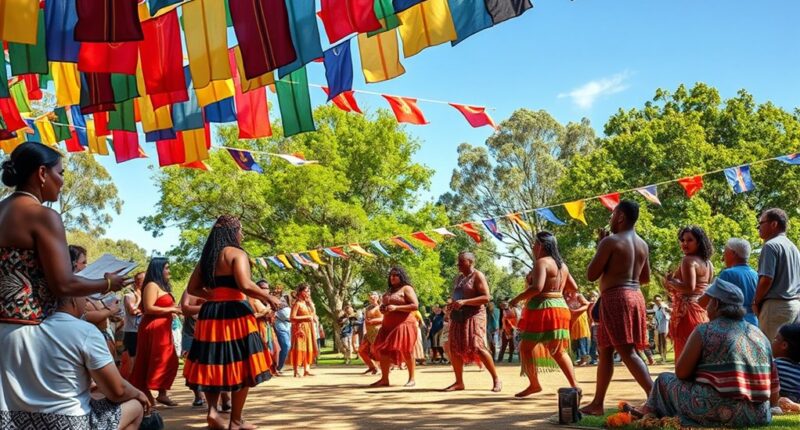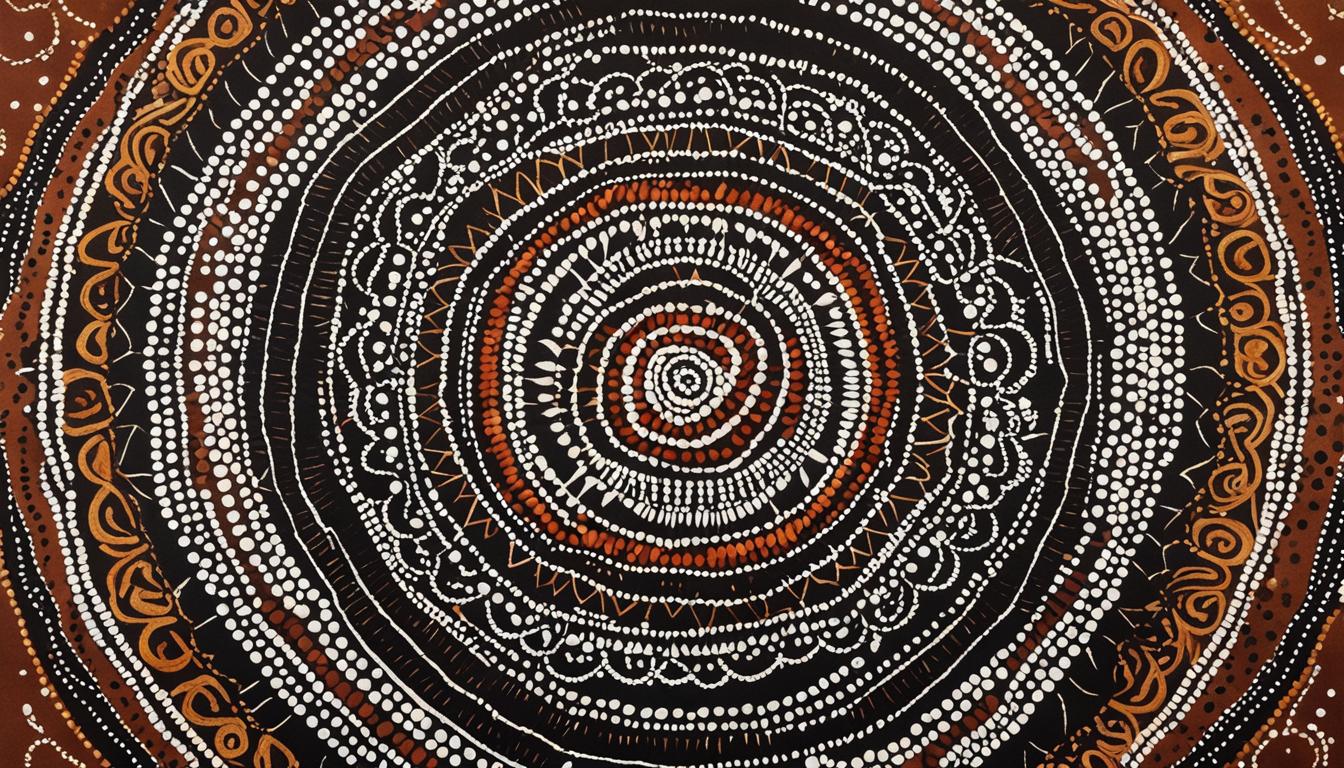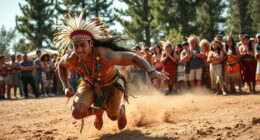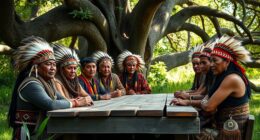During NAIDOC Week, you can celebrate beyond the march by exploring Indigenous art, storytelling, and cultural activities. Attend local galleries or cultural centers to experience vibrant paintings and carvings that showcase Dreamtime stories and ancestral themes. Join storytelling sessions, traditional dance, or art workshops to connect with Indigenous traditions firsthand. Supporting community-led events and respecting the cultural significance behind each act helps foster understanding. Continuing will reveal even more meaningful ways to honor Indigenous culture.
Key Takeaways
- Attend local Indigenous art exhibitions and galleries to experience cultural stories visually.
- Participate in storytelling performances, dance workshops, or traditional craft activities led by Indigenous artists.
- Support Indigenous-led markets and events that showcase traditional crafts, music, and storytelling.
- Engage with community-led cultural initiatives to deepen understanding and appreciation of Indigenous heritage.
- Respect and learn about the significance of Indigenous artworks and stories beyond celebrations to help preserve traditions.
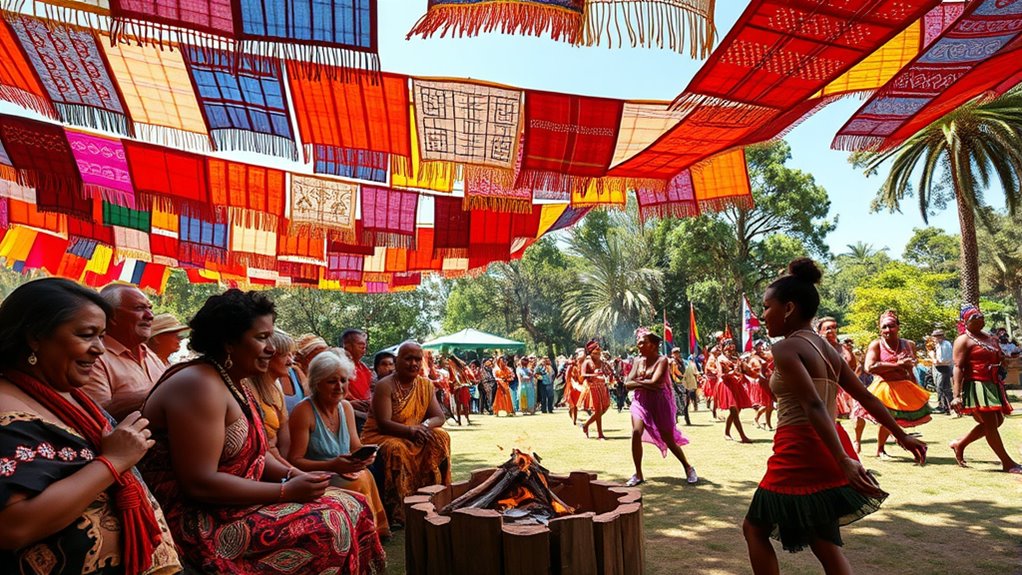
Have you ever wondered how communities come together to celebrate Aboriginal and Torres Strait Islander cultures? One powerful way is through Indigenous art and cultural storytelling. These traditions are more than just creative expressions; they’re essential links to history, identity, and spirituality. When you explore Indigenous art, you discover vibrant paintings, intricate dot work, and carvings that tell stories passed down through generations. These artworks often depict Dreamtime stories, ancestral beings, and the natural landscape, offering a visual narrative that connects you directly with Indigenous culture. By engaging with these artistic expressions, you gain a deeper appreciation of the cultural significance behind each piece and the stories they embody. Additionally, understanding the cultural heritage embedded in these works helps preserve traditional knowledge for future generations.
Cultural storytelling is another fundamental aspect of Indigenous communities’ celebrations. It’s a living tradition that preserves knowledge, language, and spirituality. When you listen to Indigenous stories, whether told through spoken word, song, or dance, you participate in a sacred exchange that maintains cultural continuity. These stories often explain the origins of the land, traditional laws, and moral lessons, fostering respect and understanding. Participating in storytelling sessions or watching performances allows you to experience the depth of Indigenous worldview firsthand. It’s a way to connect emotionally and intellectually, enriching your understanding of their cultural heritage.
Celebrating Indigenous art and storytelling beyond the March can take many forms. Visiting local galleries or cultural centers that showcase Indigenous artworks lets you see these stories come alive visually. Attending storytelling festivals or performances provides an immersive experience, where you can hear firsthand accounts from Indigenous storytellers. Engaging with community-led workshops can also deepen your appreciation, as they often involve hands-on activities like painting or learning traditional dances that carry cultural stories. Sharing a meal at Indigenous-led events or markets further supports cultural expression and provides a chance to converse directly with artists and storytellers, gaining insights into their traditions.
Frequently Asked Questions
How Can Workplaces Participate in NAIDOC Week?
You can actively participate in NAIDOC Week by showcasing Indigenous art and promoting cultural storytelling in your workplace. Organize exhibitions or workshops focused on Indigenous artists and their work, encouraging employees to learn and appreciate their stories. Incorporate Indigenous symbols and themes into your communications or decor, and invite Indigenous speakers to share their cultural insights. These actions foster understanding and respect, making your workplace more inclusive and culturally aware.
Are There Virtual Events for NAIDOC Week Celebrations?
You can definitely participate in NAIDOC Week through virtual events and online celebrations. Many organizations host live-streamed talks, cultural performances, and educational webinars that you can join from anywhere. These virtual events allow you to learn about Aboriginal and Torres Strait Islander cultures, histories, and achievements without leaving your home. Engaging in online celebrations is a meaningful way to show support and deepen your understanding of First Nations communities during this important week.
How Can Schools Incorporate NAIDOC Themes Into Lessons?
Imagine a classroom where Indigenous perspectives shine alongside other subjects, creating a vibrant tapestry of learning. You can incorporate NAIDOC themes by integrating Indigenous history, stories, and art into lessons, fostering cultural integration. Use resources like guest speakers or cultural activities to bring topics to life. This approach not only enriches students’ understanding but also promotes respect and connection, making Indigenous voices an integral part of everyday education.
What Are Some Traditional Activities to Try at Home?
At home, you can explore traditional activities like sharing Dreamtime stories to connect with Aboriginal culture and history. Try preparing traditional recipes together, which offers a hands-on way to learn about Aboriginal foods and customs. You might also create art inspired by Aboriginal dot paintings or listen to Indigenous music. These activities help deepen understanding and appreciation of Aboriginal traditions while making meaningful family memories.
How Does NAIDOC Week Support Indigenous Communities Year-Round?
NAIDOC Week supports Indigenous communities year-round by promoting cultural preservation and fostering community engagement. When you participate in events and activities, you help raise awareness about Indigenous histories and traditions, encouraging respect and understanding. Your involvement strengthens community bonds and helps guarantee these cultures are celebrated and preserved beyond just one week. By staying engaged, you contribute to ongoing support for Indigenous peoples and their rich cultural heritage.
Conclusion
As you celebrate NAIDOC Week beyond the march, remember that embracing Indigenous culture can genuinely challenge the idea that tradition is static. Like how storytelling evolves, your participation helps keep cultural practices alive and dynamic. By engaging with art, language, and community events, you’re contributing to a living history that adapts and thrives. So, step beyond the march—your actions can help prove that cultural connection isn’t just a theory but a powerful, ongoing reality.
Mary is a passionate writer who brings creativity and a fresh perspective to our team. Her words have the power to captivate and inspire, making her an essential contributor to our content. Mary’s commitment to storytelling and dedication to promoting Indigenous culture ensures that her work touches the hearts of our readers. We’re fortunate to have her as part of our team.
